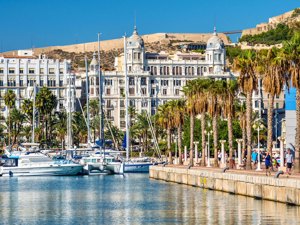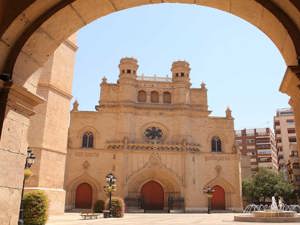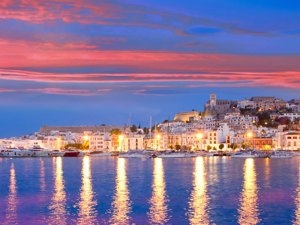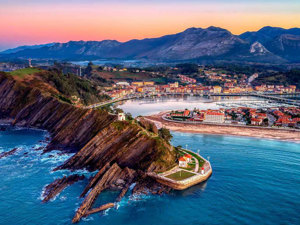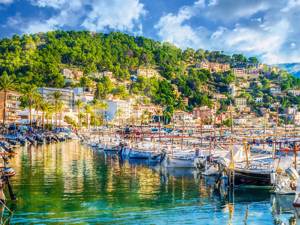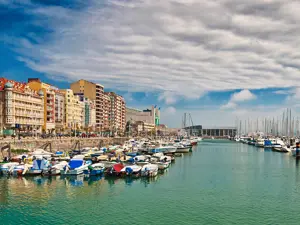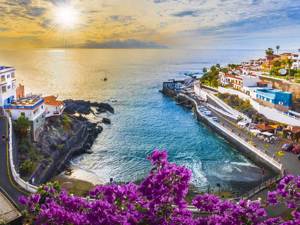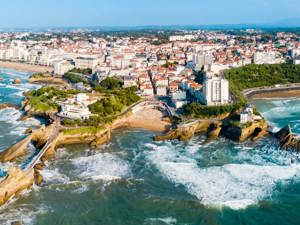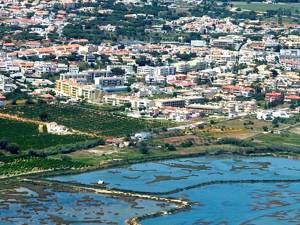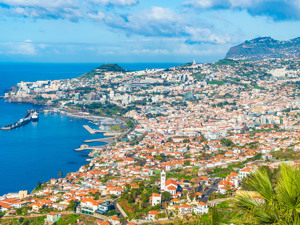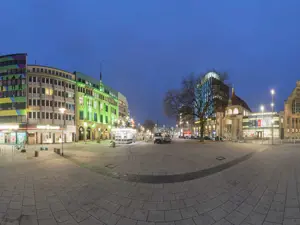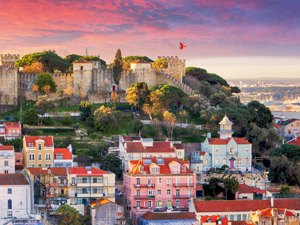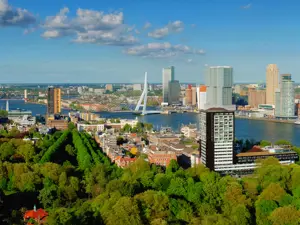The green capital of the Basque region
Vitoria-Gasteiz was awarded the wholly appropriate title of green capital of the Basque region in 2012. It is the chief town of the region of Álava, in the north of Spain, and is home to numerous parks (forty to be precise), with over 150,000 trees. The flora is so abundant that it is said there are 42 square metres of countryside for every inhabitant.

Virgen Plaza in Vitoria and the house with the feature miradores Copyright © Sisterscom.com, Shutterstock
The characteristic houses feature ‘miradores’, old protruding balconies, and are scattered along the streets and squares of Vitoria, a city lying between the hills (in the old part of the city) and the plain (the so-called ensanche) in the new area, harmoniously combining the architecture of the past with state-of-the-art buildings.
Vitoria-Gasteiz was founded in 1181 on the pre-existing village of Gasteiz by King Sancho VI of Navarre under the name of New Vitoria, which is why it still bears the two names. It is people-friendly city with spacious pedestrian areas, a wide variety of cultural activities and efficient public services.
The long history of Vitoria-Gasteiz is evident throughout its old neighbourhoods, the old town being considered one of the most beautiful in the region: the almond-shaped Gothic Quarter, known as the Almendra Medieval has been declared a National Monument and offers beautiful houses constructed in several styles: Renaissance, Baroque, Neoclassical.
The heart of Vitoria's city life is Plaza de España or Plaza Nueva, at the foot of the hill, which is built in a distinctive neoclassical style. The towers of the four Gothic churches are also a focal point - San Miguel, the oldest, with a chapel dedicated to the White Virgin, patron saint of the city, San Vincente, San Pedro (Peter) and the Cathedral of Santa Maria. These are all found in the old quarter and define the city’s skyline.

The defensive walls of Vitoria-Gasteiz
Surrounded by eleventh-century defensive walls, before King Sancho built the new city, Vitoria-Gasteiz had always been a protected city and in the past was one of the pilgrimage stages for the pilgrims of the Camino de Santiago (Way of St. James), not just for peaceful moments spent in the chapel dedicated to the saint, but also for its modern organization of hostels, in addition to the presence of efficient hospitals.
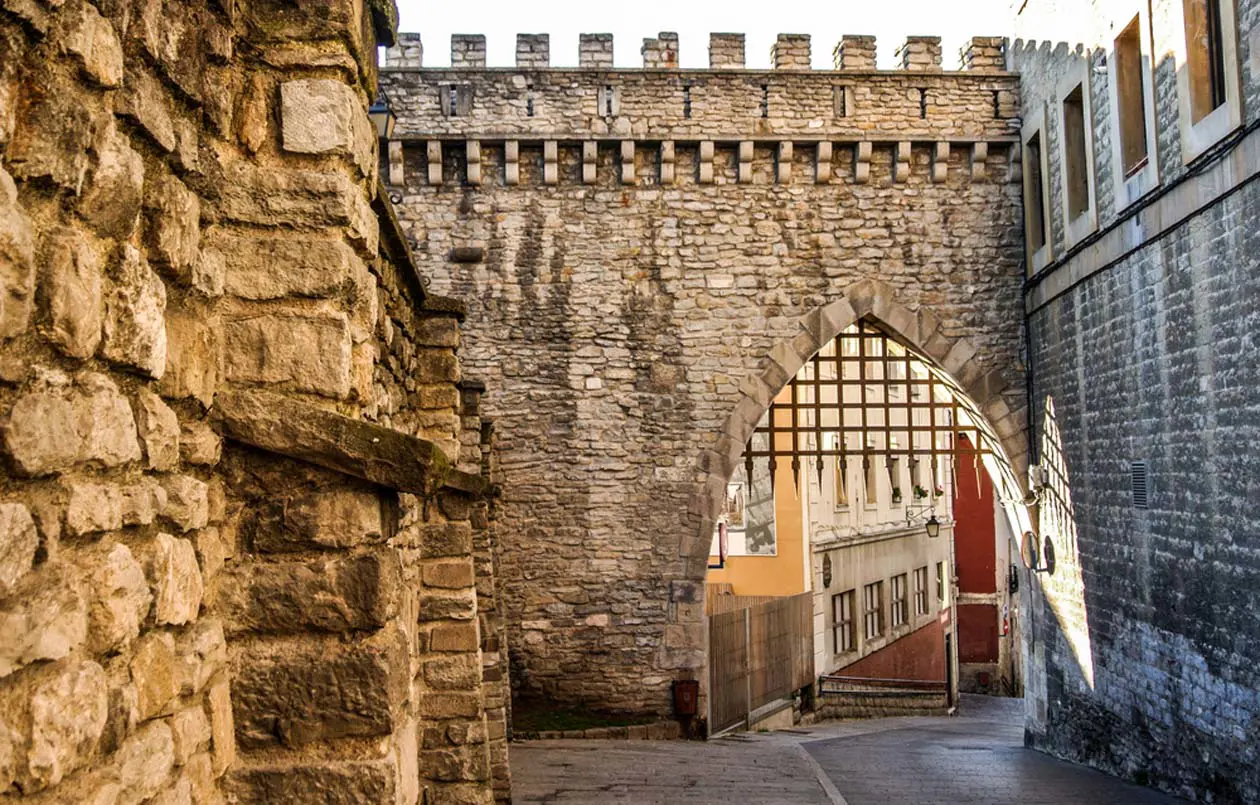
History, art and nature, as well as industrial traditions, can be explored in the numerous museums. The Archaeological Museum of Álava offers a variety of exhibitions relating to Álava’s past, from prehistory to the Middle Ages. The Museum of Natural Sciences features interesting sea fossil discoveries. There are also the Museum of Weapons, the extensive Bibat Museum Complex (Bibat means two in one in the Basque language and houses the best collection of playing cards in the world) and the Lantern Museum, with a colourful collection of lamps used during the Rosary of the Lanterns procession.
The events taking place in the city of Vitoria-Gasteiz are a spectacle not to be missed: among them the descent of Celedón is one to note. It is celebrated every 4th August and lasts a few days, in honour of the White Virgin: a character dressed in traditional costume is bound and descends from the bell tower of the Church of San Miguel into a crowded square, which is alive with songs, cheers and applause. In the city there is also a unique route that shows the restoration of monuments and churches, in particular the Cathedral dedicated to Santa Maria.
In Vitoria, traditional Spanish cheerfulness abounds, and so do the delicious flavours of its traditional dishes. So much so, that in 2014 it earned the title of Capital of Spanish Gastronomy.
Basque cuisine
The Basque recipes are a real discovery - some found nowhere else such as Piperrade, a stew of green peppers, red onions and tomatoes, a dish loved by locals because it resembles the colours of the Basque flag; Txangurro, prepared with spider crab and married with onions, garlic, tomatoes and brandy; or Percebes (goose barnacle), a rare crustacean found only in the area. Idiazabal is a typical cheese from the region with a special smoked aftertaste; Txakoli, appreciated around the world, is a particular dry and fruity wine obtained from green grapes grown in the Basque Country (like Rioja wines); and delicious 'pintxos' are miniature culinary specialties stuffed with vegetables, meat and fish and combined with other tasty ingredients - a delight not to be missed.

Finally, do not miss some of the international Festivals. These include the Jazz Festival, the Azkena Rock Festival, usually from the end of June, the Bajada del Celedón (Descent of the Celedón), the only event of its kind, celebrating the White Virgin, held from 4th to 9th August.
Text by Anna Glik
Avion Tourism Magazine
Photos: Copyright © Sisterscom.com / Shutterstock
All rights reserved.
Tourism Board
www.vitoria-gasteiz.org/tourism
www.alavaturismo.eus
www.spain.info
Partnership with Booking.com
Where to sleep in Vitoria-Gasteiz
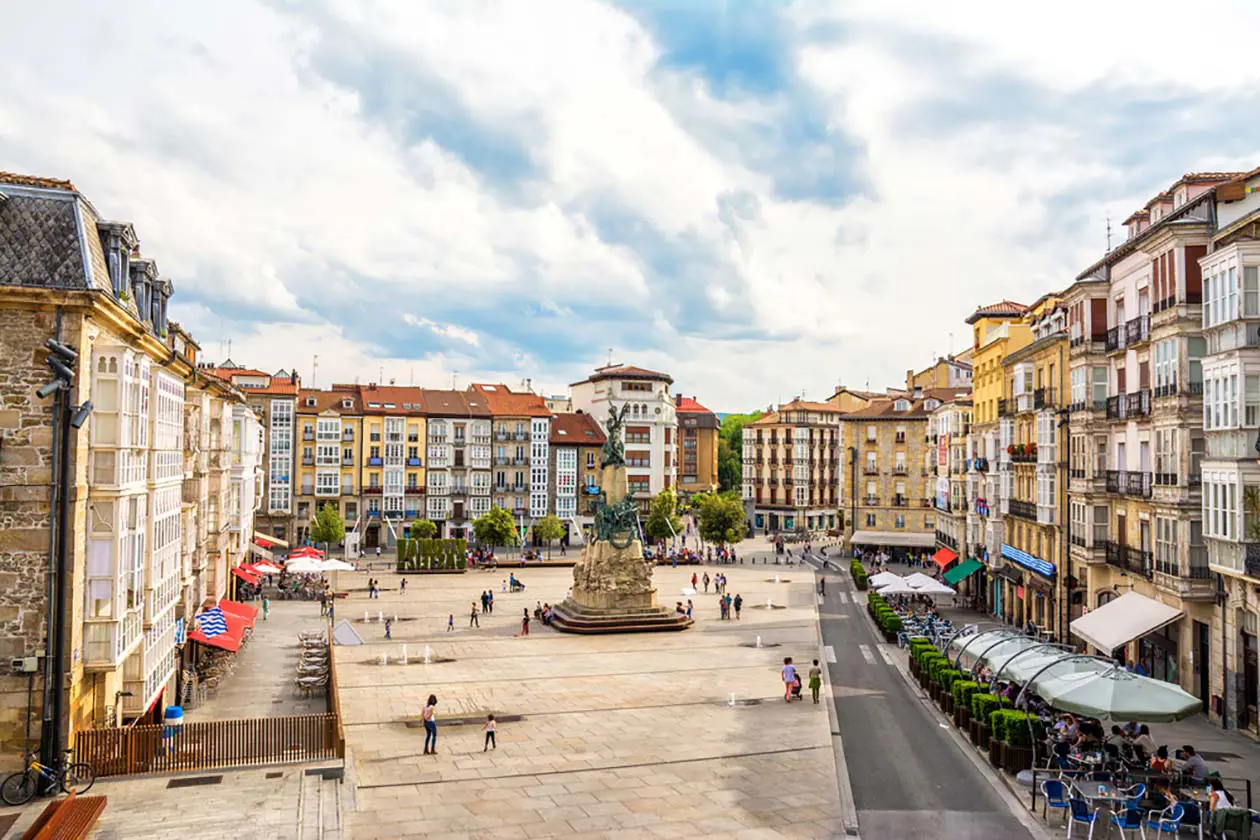
Vitoria-Gasteiz Copyright © Sisterscom.com, Shutterstock
Vitoria is a welcoming city and offers different possibilities for accommodation.
To find the ideal hotel and the best offers you can do a search for the stars but also for districts or landmarks.
LANDMARKS
Hotels in tourist areas
AIRPORT
Hotels near the airport
WHERE TO GO in Vitoria-Gasteiz
Monuments in Vitoria-Gasteiz

Copyright © Sisterscom.com, Shutterstock
SANTA MARIA CATHEDRAL
Also known as the Old Cathedral, the Santa Maria Cathedral of Vitoria-Gasteiz is a magnificent Gothic church of the XIII and XIV centuries situated on the hill of Campillo, in the upper part of the city. Although it has been in the process of being restored for years, it is possible to visit it through ‘Open for Building Work’, an organization that guides visitors, helping them to understand the restoration works that have taken place over the centuries. Combined with the visit to the Cathedral, it is possible to take a walk along the ancient walls of the city, with a guide that illustrates Vitoria’s past from its foundation.

Copyright © Sisterscom.com, Shutterstock
NEW CATHEDRAL
The New Cathedral of Vitoria-Gasteiz is a neogothic building, built where the ancient Convent of the Brígidas was located, was inaugurated in 1969 thanks to the Bishop Monsignor José Cadena Eleta. The church, developed by architects Julián Apraiz and Javier de Luque, has a Latin cross plan, with five naves, a walkway, a crypt and is covered with cross vaults.
Museums in Vitoria-Gasteiz

Copyright © Sisterscom.com, Shutterstock
ARTIUM. MUSEUM OF CONTEMPORARY ART
The Artium Museum of Vitoria-Gasteiz houses works by Basque and Spanish artists with more than 3,000 pieces of the XX and XXI centuries, which bear the signatures of Picasso, Mirò, Dalí, Chillida and many other artists. This is a permanent collection of contemporary Basque and Spanish art in a dynamic museum.

Copyright © Sisterscom.com, Shutterstock
MUSEUM OF NATURAL SCIENCE
The Museum of Natural Science in Vitoria-Gasteiz is one of the most important museums in the world for palaeontologist material and rare fossils from the Álava Sea, as well as elements of botany and local zoology.
BIBAT. PLAYING CARD MUSEUM AND ARCHAEOLOGICAL MUSEUM
Within the Renaissance Bendaña Palace, the unique Fournier Museum of Vitoria-Gasteiz is dedicated to the history and evolution of playing cards over the centuries and their characteristics in various countries. It is considered the most important in the world on this theme and features more than 20,000 pieces.
The Álava Archaeological Museum can also be found there, in a new building designed by architect Patxi Mangado.
MUSEUM OF SACRED ART
Housed in the Cathedral building, the Museum of Sacred Art of Vitoria-Gasteiz features a valuable collection of Romanesque works: altars, capitals, tombs and richly decorated sacred vestments from the 16th to the 18th century, as well as pyxides, monstrances and other gold religious items. There are also Renaissance paintings by Flemish artists, including effigies of Madonna and Christ. Noteworthy is the artistic 18th century crib from Naples and the retable of St. Nicholas of Bari.
MUSEUM OF FINE ART
Housed in the beautiful residence of the Count Dávila, built in 1912 in eclectic style, the Museum of Fine Art of Vitoria-Gasteiz is dedicated to Spanish art of the thirteenth and nineteenth centuries, as well as to Basque folklore in the century from the mid-nineteenth to mid-twentieth centuries.
It mainly displays portraits and landscapes, with several donations coming from the Prado Museum of Madrid.
Excursions in Vitoria-Gasteiz

Copyright © Sisterscom.com, Shutterstock
PARKS IN VITORIA-GASTEIZ
The city of Vitoria-Gasteiz is surrounded by a large natural green belt that includes six parks. Among them, La Florida Park is the most romantic, with streams, trees of many species, and in the centre, a bandstand equipped for a small orchestra. Not only are there comfortable boulevards for walking or biking, but there is also a public library in the park, as well as many dining options, offering culinary delights from the area. The Salburua Park, only 2 km away from the city centre, is a green space with various lagoons and a small oak grove.

Copyright © Sisterscom.com, Shutterstock
WINE REGION OF RIOJA
The Rioja Wine Region is a must see.
Only a few kilometres from Vitoria-Gasteiz, in the south of the Basque Country, the incredible medieval village of Haro is worth a visit. Here you can visit a traditional cellar to taste and buy the fine wines of this area of controlled origin.
Partnership with GetYourGuide
Tours and excursions
You might be interested in
Destinations found in the vicinity
Other destinations
Airports nearby Vitoria


